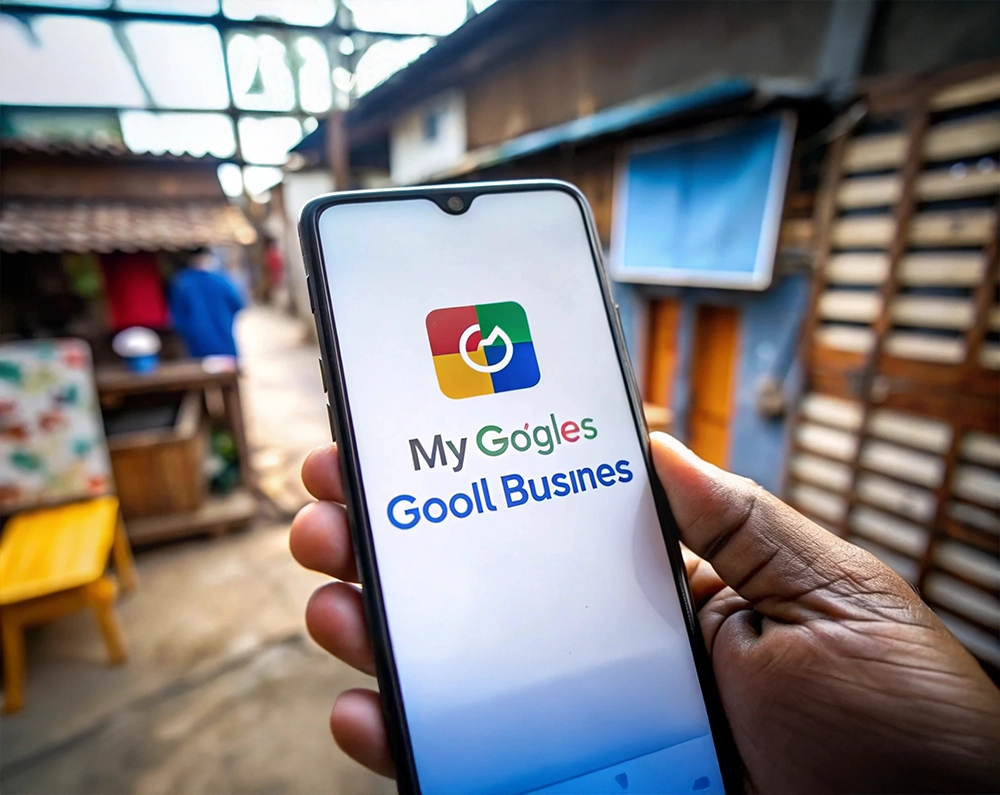Gone are the days when “go big or go home” was the norm. The smarter path for many small businesses today is the one that brings you closer to the heart of your neighborhood and the people most likely to walk through your door.
This is where hyperlocal marketing steps in—and it’s transforming the way small businesses grow.
Think of it as a magnifying glass. Instead of spreading reach thin across an ocean of audiences, you zoom in tight on the handful of people most likely to become customers because they’re already near you.
Done right, hyper local marketing strategies can be the difference between steady growth and struggling to compete with giants that have bigger budgets.
Let’s unpack the details, explore local marketing tactics that actually work, and clarify the often-confusing hyperlocal meaning so businesses can approach this field with clarity and confidence.
What is Hyperlocal?
First, let’s answer a fundamental question: define hyperlocal.
The term “hyperlocal” simply refers to extremely specific geographic areas. Instead of targeting a city, you might focus on one neighborhood. Instead of “the whole town,” you home in on a radius of maybe one mile around your store.
Let’s say you sell eco-friendly cleaning products. There’s a world of difference between being the #1 organic result for “buy natural cleaning spray online” and floating down at spot #16.
So, when marketers talk about hyperlocal meaning , it’s about narrowing focus—not just geographically, but also contextually.
So, if you’ve ever caught yourself googling “what is SEO position” and hoping for a clear answer: it’s your website’s ranking in search results for a specific keyword. Everything that gives your page a better spot—that’s search engine positioning in action.
You’re aiming at the people closest to your business, both physically and in terms of immediate need.
For example, a local bakery doesn’t need to advertise to the entire metro area. Someone 20 miles away probably won’t make the drive.
Instead, it should focus on people who are a few minutes’ walk away—on foot, ready for that fresh pastry. That’s hyperlocal marketing in action: proximity + relevance.
Why Hyperlocal Marketing Works for Small Businesses
Small businesses thrive on nearby traffic. Local customers often account for the bulk of sales, word-of-mouth, and referrals.
While big corporations pour millions into national ads, a corner café, community yoga studio, or neighborhood hardware store connects best with people who can literally walk through the door within minutes.
Here’s why hyper-targeted marketing makes enormous sense for small businesses:
1. Limited Budgets, Greater Focus
Instead of competing for expensive clicks on broad keywords, businesses double down where it matters—close to home. This eliminates wasted ad spend and boosts ROI. Ultra‑local ads have a lower cost per impression and drive nearby clicks and conversions.
2. Immediate Access
People searching “coffee shop near me” aren’t lukewarm prospects—they’re on the verge of making a purchase.
3. Stronger Relationships
Hyperlocal marketing helps businesses cement their place in the local community. Sponsorships, local partnerships, and events generate goodwill and nurture loyalty in a way corporations struggle to replicate.
4. Mobile-Friendly
With mobile searches driving the consumer journey, hyperlocal strategies like geotargeted ads and geofencing deliver relevant marketing exactly when people are nearby.
All of this explains why hyper local advertising management is gaining traction in digital strategy circles. Small doesn’t mean weak—it means winning where it matters most.
Breaking Down Hyper Local Marketing Strategies
1. Location-Based SEO
Make sure your website screams local. Include neighborhood names, landmarks, and directions in your copy. Optimize for search terms like “near me” because that’s how customers usually type queries. Register your business with Google Business Profile so your location shows clearly on maps.
Accurate NAP (Name, Address, Phone number) information and consistent citations across directories also boosts visibility and trust.
2. Localized Content Marketing
Don’t just write blogs for “everyone.” Write for your own backyard. Articles like “5 Best Running Routes in [Your Neighborhood]” or “Events to Look Out For This Weekend Near [Your Area]” make you relevant.
These posts not only improve SEO but also demonstrate engagement with your community—making you more likely to be picked up by local blogs or media.
3. Geo-Targeted Ads
One of the most powerful local marketing tactics is running ads targeted by radius or zip code. Both Facebook and Google Ads allow you to narrow campaigns down to tiny zones. For example, a pizza place can run an ad only for people within a 2-mile radius, right at dinner time.
These posts not only improve SEO but also demonstrate engagement with your community—making you more likely to be picked up by local blogs or media.
4. Local Partnerships
Team up with fellow local businesses. A florist and bakery together can promote wedding packages. A barber and local coffee shop can cross-offer coupons. Partnerships multiply exposure in shared markets which strengthen local credibility and visibility.
This often yields lower cost-per-impression and higher click-through rates, increasing efficiency and conversions.
Hyperlocal Advertising Management: Getting Tactical
Successful businesses don’t stop at the idea—they roll up sleeves with implementation. That’s where hyper local advertising management comes in.
Handling this correctly requires balancing automation with precision. You don’t just set a generic ad on autopilot. Instead:
- Define the tightest radius possible around your store. So, when a potential customer crosses that virtual boundary, they receive highly relevant, location-based offers or notifications.
- Experiment with time-based ads (coffee ads work before morning rush hours; restaurant ads work around dinnertime).
- Test different creatives for different pockets of neighborhoods. This keeps your ads fresh, localized, and reflective of community-specific identity.
- Use analytics not just for clicks but for true walk-ins and conversions.
When talking about hyper-targeted marketing , it’s easy to think it’s all digital. In truth, it often marries online targeting with offline behavior.
Someone sees your ad on their phone while walking, then steps inside your shop five minutes later—that’s hyperlocal in action.
The Psychology Behind Hyperlocal
Part of why this strategy feels so natural goes beyond money and geography—it touches emotional psychology.
People identify with where they live. They feel pride in local context. When a campaign mentions their specific street, neighborhood, or community event, it resonates instantly.
Hyperlocal messages feel “for me” in a way that broad sweep ads never do. That is the energy behind the booming adoption of hyper local marketing strategies . It doesn’t just convert—it connects.
Defining Hyperlocal with Real Life-like Examples
- Bakery Case: A small bakery runs an Instagram story ad seen only by people within one mile between 7 and 10 a.m. It offers “Fresh croissants today only.” Someone walking to work is remembered , drops by, and buys.
- Fitness Studio Case: A yoga studio promotes “free trial morning class for first-timers in [Neighborhood X].” They run the ad only to people living in zip codes overlapping their location. Membership grows quickly without wasted spend.
- Hardware Store Case: Instead of vague promotions, the store sponsors a Facebook ad campaign for “DIY fixes for flooded basements in [specific town],” right after a local storm. Residents respond instantly.
These are not nationwide campaigns; they are pin-point accurate opportunities, maximizing resources while delivering tangible impact.
Common Mistakes to Avoid
Even good ideas can misfire if businesses aren’t careful. Some common pitfalls in hyper local marketing strategies include:
- Going Too Broad – Avoid setting ad zones too wide, it dilutes the precision. Focus on specific neighborhoods or zip codes to ensure your message reaches the most relevant audience.
- Ignoring Local SEO – If your business doesn’t show in “near me” searches, you lose countless chances.
- Generic Messaging – Ads that could apply to anywhere don’t feel local. Mention streets, locations, or touchstones into your content to make it more relatable.
- Not Measuring Offline Impact – Always track foot traffic and tie sales back to specific promotions. This data can inform future strategies and help optimize your marketing efforts.
The Future of Hyperlocal
With technology getting sharper, hyper-targeted marketing will only grow. Location-sharing on mobile devices, local data from smart assistants, and AI-driven personalization are pointing toward a future where ads adapt on the fly depending on street corners or real-time behavior.
Imagine walking through a shopping district and receiving a timed ad offering a discount just as you pass a store.
That scenario isn’t far off—it’s already being piloted. For small businesses, this is tremendous because it levels the playing field against national brands.
Final Thoughts
So, to wrap up: hyperlocal marketing is not just a buzzword. It’s a vital approach for small businesses built around community, immediacy, and super-focused reach.
When you strip it down, hyperlocal meaning is simple: connect with the nearest and most relevant audience possible and do it in a way that feels personal.
Through the right local marketing tactics , supported by well-structured hyper local advertising management , even a small business with limited funds can compete effectively against larger players.
The key is clarity: know your audience, target tightly, speak directly to place and context, measure results, and adjust accordingly.
In the battle between broad reach and focused impact, small businesses win with focus and with the help on an SEO services company.
And in today’s crowded market, that’s exactly where hyper local marketing strategies shine brightest.





